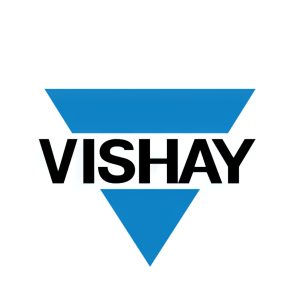New Vishay Intertechnology SMD MLCCs Offer Lead (Pb) Bearing Termination Finishes
Vishay Intertechnology has launched a new series of surface-mount multilayer ceramic chip capacitors (MLCCs) with a lead (Pb)-bearing finish aimed at low Earth orbit (LEO) satellites, military, and avionics applications. These capacitors feature a minimum lead content of 4% and mitigate tin whisker formation, with operating temperatures reaching +150 °C. The VJ....32 series is qualified per AECQ200, providing Automotive Grade reliability. Available in five sizes, the products will ship within a 12-week lead time, catering to cost-effective aerospace system needs.
- Introduction of cost-effective MLCCs with lead-bearing finishes for aerospace applications.
- Mitigation of tin whisker formation, enhancing reliability in space applications.
- Qualified according to AECQ200, ensuring automotive-grade reliability.
- None.
Insights
Analyzing...
With A Minimum Lead (Pb) Content of 4 %, Devices Mitigate Tin Whisker Formation
MALVERN, Pa., Jan. 27, 2021 (GLOBE NEWSWIRE) -- Vishay Intertechnology, Inc. (NYSE: VSH) today introduced a new series of surface-mount multilayer ceramic chip capacitors (MLCCs) with a lead (Pb)-bearing termination finish suitable for low Earth orbit (LEO) satellites and other space, military, and avionics applications requiring tin whisker mitigation. Operating temperatures can be as high as +150 °C.
The Vishay Vitramon VJ....32 Lead-Bearing Finish series offers a termination finish with a minimum lead (Pb) content of 4 %. Previously, the option for lead (Pb)-bearing termination finishes was reserved for more expensive Hi-Rel devices. The MLCCs released today provide designers with a cost-effective alternative for aerospace systems in which tin whiskers must be avoided but space-level reliability isn’t required.
Manufactured in noble metal electrode (NME) technology with a wet build process, the VJ....32 Lead-Bearing Finish series is available with C0G (NP0) and X7R dielectrics in five body sizes from 0402 to 1210. Devices with a C0G (NP0) dielectric feature low capacitance down to 1.0 pF, a temperature coefficient of capacitance (TCC) of 0 ppm/°C ± 30 ppm/°C from -55 °C to +125 °C, and an aging rate of 0 % maximum per decade. X7R devices provide higher capacitance to 1.0 µF, TCC of ± 15 % from -55 °C to +125 °C, and an aging rate of 1 % maximum per decade.
The MLCCs are qualified according to AECQ200 to provide designers with Automotive Grade reliability.
Device Specification Table:
| Dielectric | Case code | Maximum voltage (V) | Capacitance | |
| Minimum | Maximum | |||
| C0G (NP0) | 0402 | 100 | 1.0 pF | 220 pF |
| 0603 | 200 | 1.0 pF | 820 pF | |
| 0805 | 500 | 1.0 pF | 3.9 nF | |
| 1206 | 630 | 1.0 pF | 8.2 nF | |
| 1210 | 630 | 100 pF | 12 nF | |
| X7R | 0402 | 100 | 120 pF | 33 nF |
| 0603 | 200 | 330 pF | 150 nF | |
| 0805 | 200 | 330 pF | 470 nF | |
| 1206 | 630 | 220 pF | 1.0 µF | |
| 1210 | 630 | 390 pF | 1.0 µF | |
Samples and production quantities of the VJ....32 Lead-Bearing Finish MLCCs are available now, with lead times of 12 weeks.
Vishay manufactures one of the world’s largest portfolios of discrete semiconductors and passive electronic components that are essential to innovative designs in the automotive, industrial, computing, consumer, telecommunications, military, aerospace, and medical markets. Serving customers worldwide, Vishay is The DNA of tech.™ Vishay Intertechnology, Inc. is a Fortune 1,000 Company listed on the NYSE (VSH). More on Vishay at www.Vishay.com.
The DNA of tech™ is a trademark of Vishay Intertechnology.
Vishay on Facebook: http://www.facebook.com/VishayIntertechnology
Vishay Twitter feed: http://twitter.com/vishayindust
Link to product datasheet:
http://www.vishay.com/ppg?45256 (VJ....32 Lead-Bearing Finish MLCCs)
Link to product photo:
https://www.flickr.com/photos/vishay/albums/72157717971333968
For more information please contact:
Vishay Intertechnology
Peter Henrici, +1 408 567-8400
peter.henrici@vishay.com
or
Redpines
Bob Decker, +1 415 409-0233
bob.decker@redpinesgroup.com






